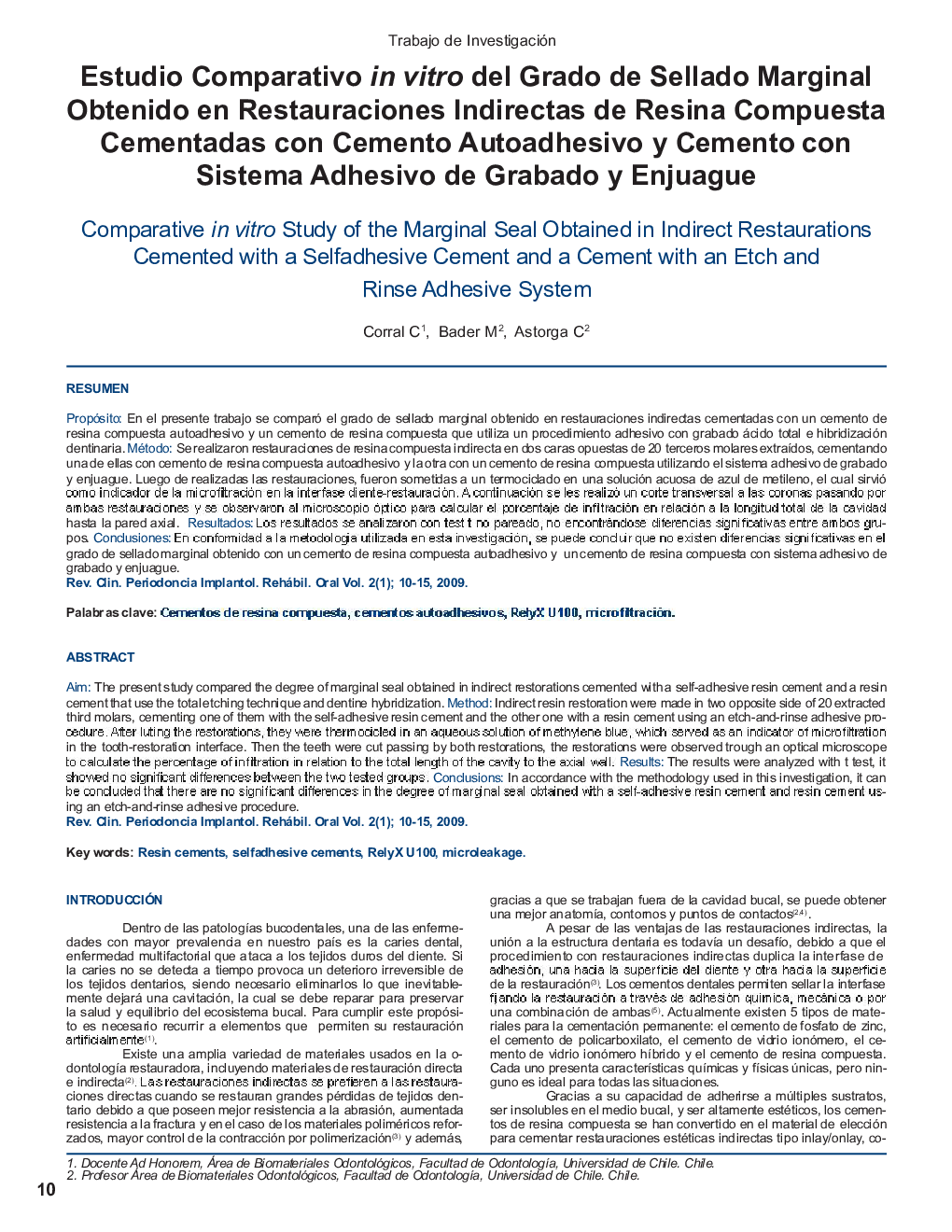| Article ID | Journal | Published Year | Pages | File Type |
|---|---|---|---|---|
| 3172545 | Revista Clínica de Periodoncia, Implantología y Rehabilitación Oral | 2009 | 6 Pages |
ResumenPropósitoEn el presente trabajo se comparó el grado de sellado marginal obtenido en restauraciones indirectas cementadas con un cemento de resina compuesta autoadhesivo y un cemento de resina compuesta que utiliza un procedimiento adhesivo con grabado ácido total e hibridización dentinaria.MétodoSe realizaron restauraciones de resina compuesta indirecta en dos caras opuestas de 20 terceros molares extraídos, cementando una de ellas con cemento de resina compuesta autoadhesivo y la otra con un cemento de resina compuesta utilizando el sistema adhesivo de grabado y enjuague. Luego de realizadas las restauraciones, fueron sometidas a un termociclado en una solución acuosa de azul de metileno, el cual sirvió como indicador de la microfitradón en la inferíase diente-restauración. A continuación se les realizó un corte transversal a las coronas pasando por ambas restauraciones y se observaron al microscopio óptico para calcular el porcentaje de infitración en relación a la longitud total de la cavidad hasta la pared axial.ResultadosLos resultados se analizaron con test t no pareado, no encontrándose diferencias significativas entre ambos grupos.ConclusionesEn conformidad a la metodología utilizada en esta investigación, se puede condürque no existen diferendas significativas en el grado de sellado marginal obtenido con un cemento de resina compuesta autoadhesivo y un cemento de resina compuesta con sistema adhesivo de grabado y enjuague
AimThe present study compared the degree of marginal seal obtained in indirect restorations cemented with a self-adhesive resin cement anda resin cement that use the total etching technique and dentine hybridization.MethodIndirect resin restoration were made in two opposite side of 20extracted third molars, cementing one of them with the self-adhesive resin cement and the other one with a resin cement using an etch-and-rinse adhesive procedure. After luting the restorations, they were thermodcled in an aqueous solution of methylene blue, which served asan indicator of micnofiltration in the tooth-restoration interface. Then the teeth were cut passing by both restorations, the restorations were observed trough an optical microscope to calculate the percentage of infitration in relation to the total length of the cavity to the axial wall.ResultsThe results were analyzed with ttest, it showed no significant differences between the two tested groups.ConclusionsIn accordance with the methodology used in this investigation, it can be conduded that there are no significant differences in the degree of marginal seal obtained wth a self-adhesive resin cement and resin cement using an etch-and-rinse adhesive procedure.
